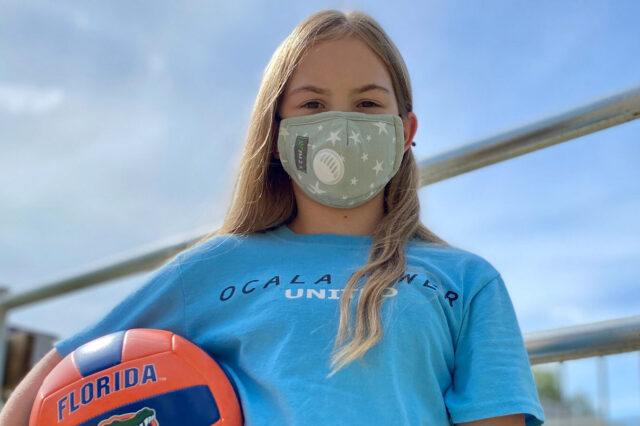Staying Upbeat Through Every Diagnosis
How 9-year-old Kendall Lewis navigates life with VACTERL association. If you ask 9-year-old Kendall “Miss K” Lewis how many surgeries she’s had in her life,…

Update your location to show providers, locations, and services closest to you.
Pulmonary atresia is a form of heart disease in which the pulmonary valve does not form properly. It is present from birth (congenital heart disease). The pulmonary valve is an opening on the right side of the heart that regulates blood flow from the right ventricle (right side pumping chamber) to the lungs.
In pulmonary atresia, the valve leaflets are fused. This causes a solid sheet of tissue to form where the valve opening should be. Normal blood flow to the lung is blocked as a result. Because of this defect, blood from the right side of the heart is restricted from reaching the lungs to pick up oxygen.
Pulmonary atresia - intact ventricular septum; PA/IVS; Congenital heart disease - pulmonary atresia; Cyanotic heart disease - pulmonary atresia; Valve - disorder pulmonary atresia
As with most congenital heart diseases, there is no known cause of pulmonary atresia. The condition is linked with another type of congenital heart defect called a patent ductus arteriosus (PDA).
Pulmonary atresia may occur with or without a ventricular septal defect (VSD).
Although both conditions are called pulmonary atresia, they are, in fact, different defects. This article discusses pulmonary atresia without a VSD.
People with PA/IVS may also have a poorly developed tricuspid valve. They may also have an underdeveloped or very thick right ventricle, and abnormal blood vessels feeding the heart. Less commonly, structures in the left ventricle, aortic valve, and right atrium are involved.
Symptoms most often occur in the first few hours of life, although it may take up to a few days.
Symptoms may include:
The health care provider will use a stethoscope to listen to the heart and lungs. People with a PDA have a heart murmur that can be heard with a stethoscope.
The following tests may be ordered:
A medicine called prostaglandin E1 is usually used to help the blood move (circulate) into the lungs. This medicine keeps a blood vessel open between the pulmonary artery and aorta. The vessel is called a PDA.
Multiple treatments are possible, but which one is selected depends on the extent of the heart abnormalities that accompany the pulmonary valve defect. Potential invasive treatments include:
Most cases can be helped with surgery. How well a baby does depends on:
Outcome varies because of the different forms of this defect. A baby may need only a single procedure or could need three or more surgeries and have only a single working ventricle.
Complications may include:
Call your provider if the baby has:
There is no known way to prevent this condition.
All pregnant women should get routine prenatal care. Many congenital defects can be found on routine ultrasound exams.
If the defect is found before birth, medical specialists (such as a pediatric cardiologist, cardiothoracic surgeon, and neonatologist) can be present at the birth, and ready to help as needed. This preparation can mean the difference between life and death for some babies.


Valente AM, Dorfman AL, Babu-Narayan SV, Kreiger EV. Congenital heart disease in the adolescent and adult. In: Libby P, Bonow RO, Mann DL, Tomaselli GF, Bhatt DL, Solomon SD, eds. Braunwald's Heart Disease: A Textbook of Cardiovascular Medicine. 12th ed. Philadelphia, PA: Elsevier; 2022:chap 82.
Well A, Fraser CD. Congenital heart disease. In: Townsend CM Jr, Beauchamp RD, Evers BM, Mattox KL, eds. Sabiston Textbook of Surgery: The Biological Basis of Modern Surgical Practice. 21st ed. Philadelphia, PA: Elsevier; 2022:chap 59.


How 9-year-old Kendall Lewis navigates life with VACTERL association. If you ask 9-year-old Kendall “Miss K” Lewis how many surgeries she’s had in her life,…

Nothing gives Kendall Lewis, better known as Miss K, more joy than seeing “her” helicopter flying high in the sky. And by “her” helicopter, we mean the…
